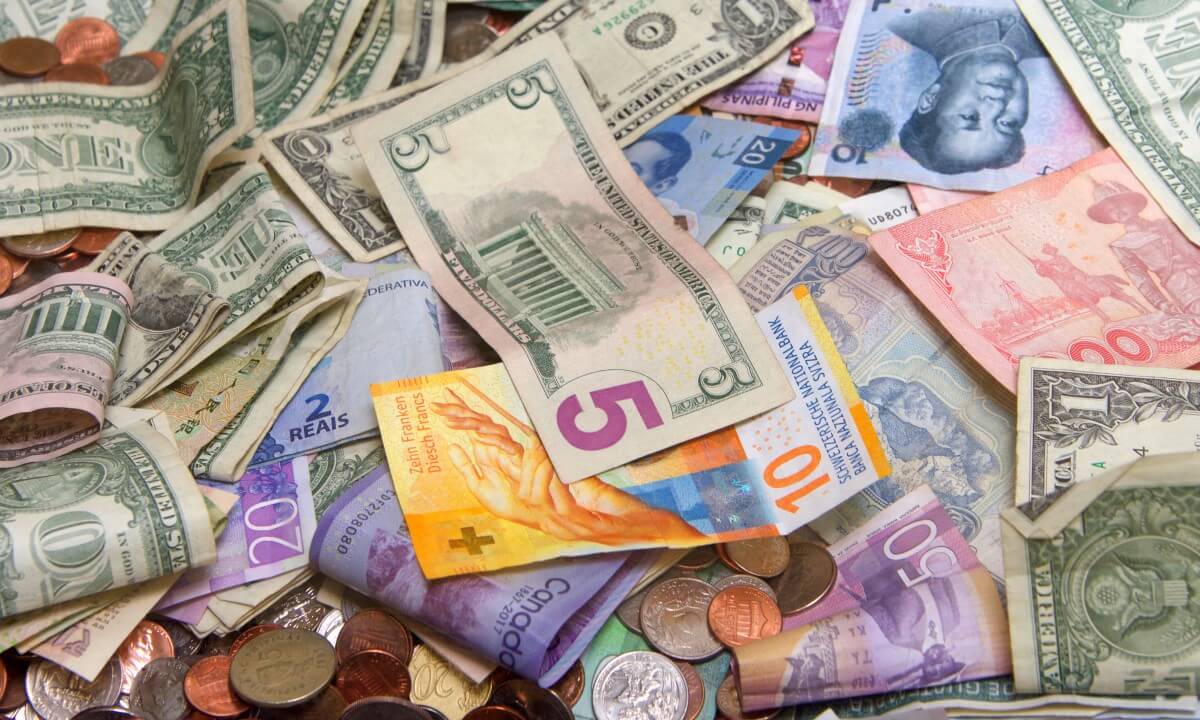The U.S. dollar skyrocketed to its highest levels since July 2020 against the basket of six major currencies on Thursday. Investors’ bets the U.S. Federal Reserve could deliver faster and larger interest rate hikes in the following months supported the currency. The agency flagged in the previous day that it was ready to start lifting rates in March to contain inflation. Thus, forex markets priced in as many as five quarter-point increases by year-end on Thursday.
Such backdrop bought dollar bulls out in force. The dollar index rallied to 97.120, hitting the highest level since July 2020. On the other hand, the euro tumbled down by 0.75% to $1.1156, reaching its lowest level since June 2020.
The greenback also jumped to a seven-week peak against Australia’s currency and hit its highest levels in more than a year versus the New Zealand dollar. Moreover, it gained broadly against emerging market currencies.
On Wednesday, the Fed indicated it would likely raise rates in March, as investors widely expected. The agency also reaffirmed plans to end its bond purchases that month before substantially reducing its asset holdings.
Chair Jerome Powell stressed that no decisions had been made in a follow-up news conference. However, he did not rule out the central bank’s scenario to consider a 50-basis point hike. Meanwhile, U.S. gross domestic product figures are due later on Thursday. Traders expect it to show annual growth at its strongest since 1984.
What do the analysts think?
Jane Foley, the head currency strategist at Rabobank, stated that even though the FX market had already been priced for hikes, many people were assuming that the agency might be more sensitive to the equity market, which it wasn’t. She also added that the Federal Reserve’s mention of the balance sheet had focused markets’ minds on the withdrawal of stimulus.
Foley thinks that a shake-out of overly long USD positions earlier in January had left the dollar in a position to react to the latest Fed signaling.
Besides, rising U.S. Treasury yields supported the greenback’s gains as well. The U.S. currency firmed by 0.5% to 115.20 yen after rallying by 0.7% against the Japanese currency on Wednesday, experiencing its sharpest rise in more than two months.
On the other hand, the risk-sensitive Australian dollar plummeted by 0.6% to $0.7072 on Thursday after dropping to as low as $0.7064 in the previous session. At the same time, the New Zealand dollar tumbled down to $0.6597, hitting an almost 15-month low. Elsa Lignos, the global head of FX strategy at RBC Capital Markets, noted that all in all, it seems markets are running away a bit here.
In Europe, the British Pound collapsed to a one-month low at $1.3376. On Thursday, it traded lower by 0.6% at last. The Sterling is currently delicately balanced as investors keep a wary eye on Prime Minister Boris Johnson. The latter is under pressure after attending parties during lockdowns. Bank of England meeting is due next week as well.
How did the Chinese Yuan and EM currencies fare?
The Chinese yuan struggled after new data showed Chinese industrial profits grew at their slowest pace in more than 18 months. This report bolstered the case for policy support. As a result, the yuan plunged by 0.7% against the dollar at 6.3642 in offshore trade on Thursday. The currency was on track for its biggest one-day drop since last July.
Meanwhile, the Russian rouble rebounded on Thursday. It gained over 1% against the U.S. dollar, pulling away from an almost 15-month low hit in the previous session. It seems investors’ concerns of an imminent escalation of tensions over Ukraine eased.
The rouble tumbled down to its lowest level since early November 2020 on Wednesday before recovering. The United States announced that it had set out a diplomatic path to address sweeping Russian demands in eastern Europe. On Thursday, Moscow also declared that it was interested in continuing dialogue.
Even though Central Europe’s currencies declined in out-of-market trade on Wednesday, they had managed to return to firmer levels by mid-morning on Thursday.
The Czech crown climbed up by 0.1% on the day, reaching 24.47 per euro, while the Polish zloty jumped by 0.3%. A Prague trader noted that the gains were fragile at the moment, though.
Read also: PrimoTrade Review 2021: All You Need To Know!











